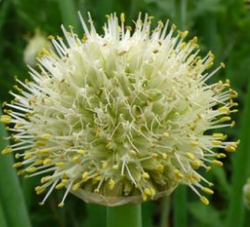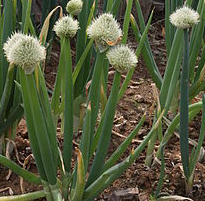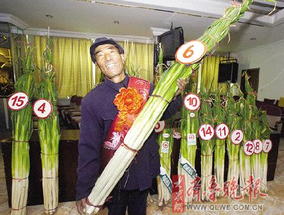 Allium fistulosum, Welsh Onion Allium fistulosum, Welsh Onion We can think of at least 180 great forest garden & perennial crops for cold climate Sweden. Want to hear about them? Over the course of the next year we will profile 5 a week on the blog. Perennial plants and crops offer a low energy, oil & resource input based foundation for future-proof agricultures. By default if an agriculture is to be called regenerative the bottom line is that it must be soil building, not soil depleting. Relentless deep tillage & poor soil husbandry (wifery?!) contributes to the majority of the 24 billion tons of topsoil lost every year on planet water. We are going to be focused on holistic polyculture grazing and perennial production at ridgedale over most of the site as this represents the most effective way to restore our degraded landscape, produce high value produce and ensure the future resource base we are managing holistically for in our decision making.  Genus Allium Species fistulosum Common Name Welsh Onion Form herb Habit clumping Origin Asia Light sun Moisture mesic Edible greens, flowers, bulb The name "Welsh onion" has become a misnomer in modern English, as the plant is not indigenous to Wales. (However, another Allium, A. ampeloprasum or common leek is the national vegetable of Wales). The name is presumed to originate from the Old English word "welisc", or Old German "welsche" meaning "foreign" (compare wal- in "walnut" of the same etymological origin). The species originated in Asia. The bulb is eaten raw or cooked and has a strong onion flavor. It can be used in salads, as a cooked vegetable or as a flavoring in cooked foods. The bulbs are rather small, usually 10 - 25mm in diameter though they can be up to 45mm and are sometimes used as spring onions. Leaves eaten raw or cooked. They have a mild onion flavour and can be added to salads or cooked as a vegetable. Traditionally they are used in Miso soup. The leaves are often available long into the winter. They contain some vitamin B1 and moderate levels of vitamin C. The flowers are best raw, with a pleasant onion flavour but rather dry texture.  Apparently the worlds largest Welsh Onions! Apparently the worlds largest Welsh Onions! The bulb contains an essential oil that is rich in sulphur compounds. It is antibacterial, antiseptic, diaphoretic, diuretic, galactogogue, stomachic, vermifuge and vulnerary. It is used in the treatment of colds and abdominal coldness and fullness. A tea made from the roots is a children's sedative. Use of the bulb in the diet impedes internal parasites. Externally, the bulb can be made into a poultice to drain pus from sores, boils and abscesses. The juice of the plant is used as a moth repellent. The whole plant is said to repel insects and moles, OUR FRIENDS AT PFAF HAVE AN AMAZING DATABASE OF SPECIES (UK BASED);Allium fistulosum
Subscribe to our newsletter for fortnightly awesome book giveaways, updates & articles...
0 Comments
Leave a Reply. |
Details
Like us on FB Below for regular updatesStay up to date with customized updates you want to receive
Upcoming coursesArchives
December 2016
Categories
All
|

 RSS Feed
RSS Feed